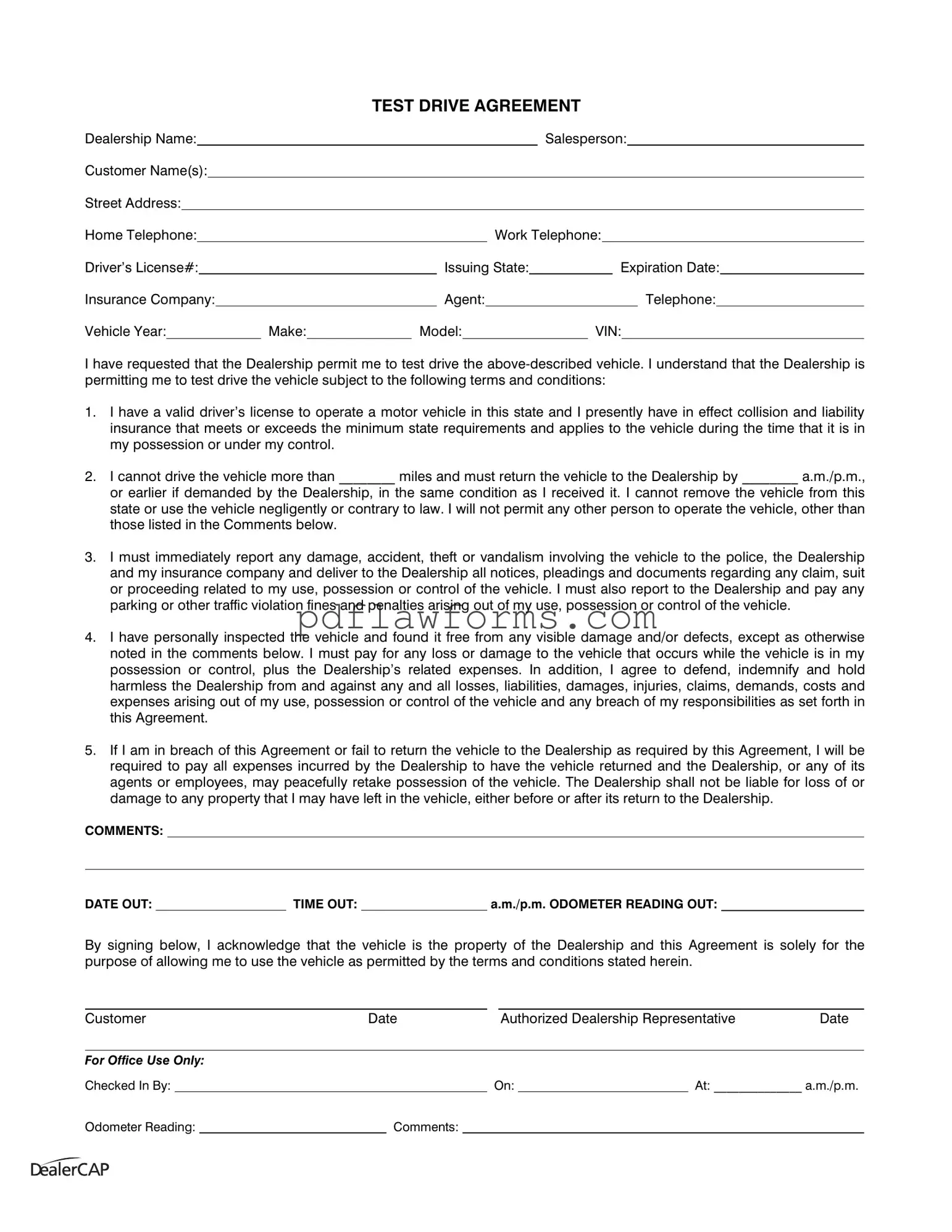The Test Drive form is an essential document that facilitates the process of allowing potential customers to experience a vehicle before making a purchase decision. This form captures critical information, including the dealership's name, the salesperson's name, and the customer's personal details such as their address and contact numbers. It also requires the customer to provide their driver's license number, the issuing state, and the expiration date, ensuring they are legally permitted to operate a vehicle. The form outlines the specific vehicle details, including the year, make, model, and VIN, which helps to accurately identify the car being tested. Customers must acknowledge several terms and conditions before taking the vehicle for a drive. These include having valid insurance, adhering to mileage limits, and returning the vehicle in the same condition. Additionally, the form mandates that customers report any incidents involving the vehicle and take responsibility for any damages incurred during the test drive. By signing the agreement, customers affirm their understanding of the dealership's ownership of the vehicle and their commitment to comply with the stipulated guidelines. This comprehensive approach not only protects the dealership but also ensures a clear understanding between the customer and the dealership regarding the test drive process.
